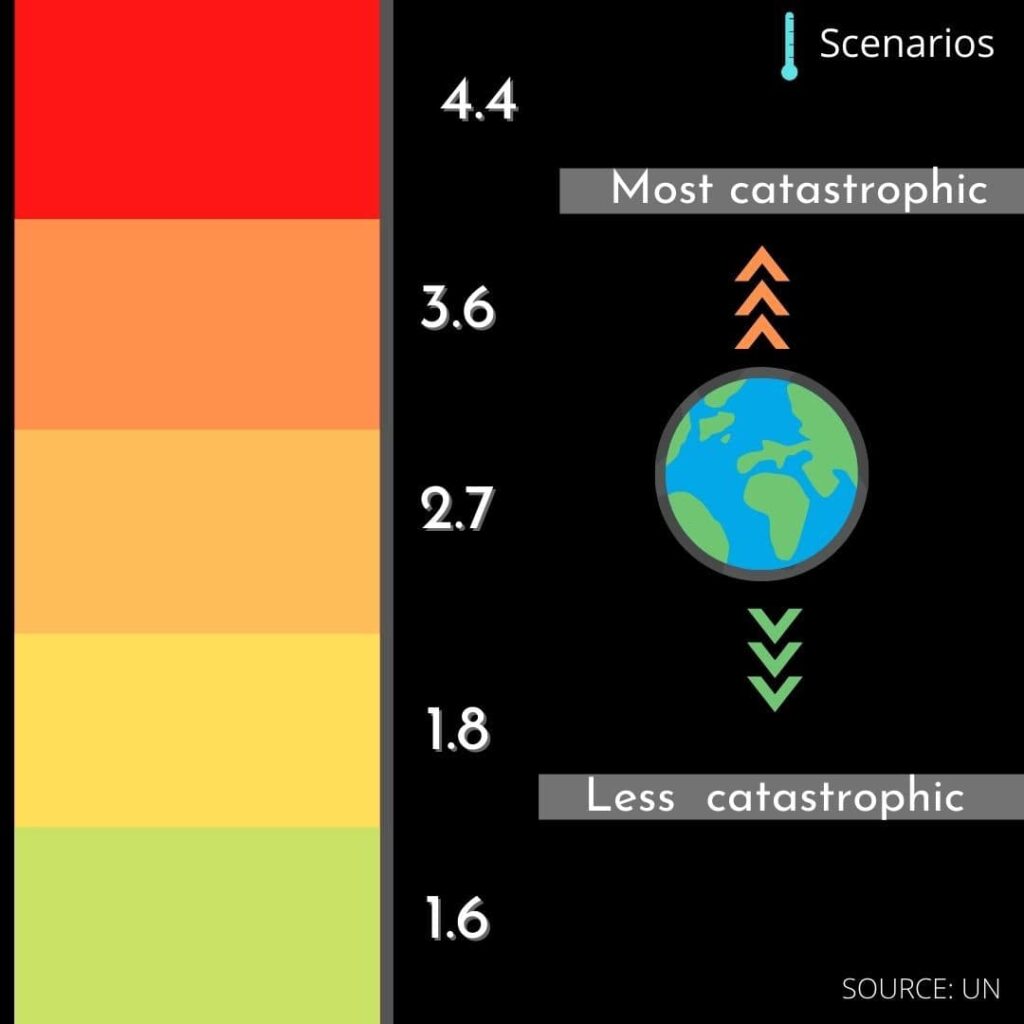The terms greenhouse effect and global warming are always mentioned together, but they are not the same thing.
The greenhouse effect is a natural process that keeps the Earth warm and makes life possible. Global warming is the phenomenon caused by the excess of these gases, bringing bad consequences for the environment.
Although the planet undergoes natural climatic changes to its functioning, the time and intensity of these oscillations have been modified by human actions, a fact proven by the report of the IPCC (Intergovernmental Panel On Climate Change).
This change happened because the human species developed tools and machines that released gases responsible for the greenhouse effect, surpassing the natural amount of these gases that already existed on Earth and unbalancing the environment across the globe.
What is the greenhouse effect?
The greenhouse effect was not a modern invention. The effect has existed for at least 400 million years.
There are some gases in the atmosphere, such as carbon dioxide, which have the power to absorb solar radiation.
Thanks to the ozone layer, only a small portion of the radiation and heat emitted by the sun manages to enter the atmosphere of planet Earth. This heat reaches the surface of the globe, and if there were no ozone layer, this heat would flee the planet back into space.
When reflected by the Earth back into space, this radiation meets the greenhouse gases, which absorb part of this heat, maintaining an average temperature on Earth.
This process was fundamental for life to happen, because without the ideal temperature conditions, there would be no way for plants and animals to survive. The problem is that we changed that course.
What is global warming?
Global warming is a phenomenon generated by this excess of greenhouse gases. Since the first Industrial Revolution, the invention of the steam engine and engines powered by fossil fuels (petroleum), have made our carbon emissions (CO2) increase dramatically.
This excess, over the last 200 years, has accumulated on our planet and has raised the Earth’s temperature by 1.1 degrees Celsius, which is enough to cause well-known havoc, such as the melting of the polar ice caps, forest fires. and sea level rise.
This process still needs to be greatly intensified and the IPCC delivered a 3,000-page report at the end of 2021 in which it explored five different scenarios. All scenarios have serious consequences for human life. The difference is in how many degrees the earth’s temperature will rise.
For more details, you can read our super-easy explanation on global warming.
Global warming predictions according to IPCC
See a summary and infographic of what are the possible scenarios for planet Earth up to 2100 in relation to global warming, according to the United Nations:

Climate change scenario: 4.4°C
Starting with the global warming scenario in case we double emissions, the news is not good. This scenario assesses what the consequences will be if we double carbon emissions by 2100.
Unfortunately, this first scenario is a great indicator of a catastrophic scenario, with the impossibility of human life, as the Earth’s temperature would become unbearable, the sea level would rise to an unbearable point and there would be no way to produce food.
This is exactly why it is necessary to take drastic and urgent action to reverse this apocalyptic prediction.
Climate change scenario: 3.6°C
In this scenario, if emissions continue to rise, the environmental results are quite dismal, with almost no quality of life for humans and intense melting of Arctic ice, which has a direct effect on both the temperature and elevation of the oceans, which regardless of of any action will continue to rise for the next 300 years.
Scenario 2.7 degrees Celsius
This is already a dangerous scenario, like anyone above 2 degrees Celsius, a limit imposed by the Paris Agreement for all nations. This is the possible scenario if there is a medium commitment to the proposed targets and there are major flaws in the carbon reduction process.
Scenario 1.8 degrees Celsius
If we go to zero emissions by 2075, 25 years later than we should to ensure the ideal scenario, the warming should be around 18.8 degrees, which is not good, but it’s still below the most dangerous zone of 2 degrees Celsius. established by the community of climate scientists and the IPCC.
Scenario 1.6 degrees Celsius
This is the best of scenarios. Right now, that goal seems almost impossible to achieve. To have a warming of “only” 1.6 degrees, it would be necessary to reach zero carbon emissions by 2050.
To guarantee a less worse future, consistent actions by the government, companies and, above all, the agriculture and energy sector will be necessary. Commitment to reducing and offsetting carbon emissions needs to go far beyond advertising campaigns or specific actions.
Greenhouse effect or global warming?
Global warming is a problem to be faced, caused by human actions by the emission of gases such as carbon dioxide and methane. These gases are some of which have the power to retain heat from solar radiation, this power is known as the greenhouse effect and is something 100% natural to the behavior of these gases.
How to reduce the consequences of greenhouse effect?
There is only one possible way out to balance the scales and prevent the greenhouse effect from fueling global warming: either humanity stops producing greenhouse gases or we find a way to eliminate these gases that are already in the atmosphere.
The ideal world is to create and implement measures that do both, to rebalance the relationship with the environment and allow planet Earth to follow its natural course of heating and cooling without the disastrous alteration that has happened by human intervention.
How to help on climate change?
You need allies in this fight. That’s why we suggest that you take a look on Hourglass planet healing program. We’re supporting, monthly, prestigious institutions who are helping to save the world every day. See our program here.


